
Mohandas Karamchand Gandhi was an Indian lawyer, anti-colonial nationalist, and political ethicist who employed nonviolent resistance to lead the successful campaign for India's independence from British rule. He inspired movements for civil rights and freedom across the world. The honorific Mahātmā, first applied to him in South Africa in 1914, is now used throughout the world.
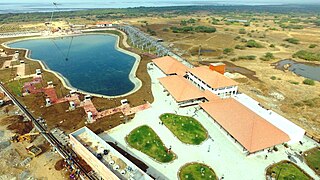
Dandi is a village in the Jalalpore taluka, Navsari District, Gujarat, India. It is located on the coast of the Arabian Sea near the city of Navsari.

Rajmohan Gandhi is an Indian biographer, historian, politician and research professor at the Center for South Asian and Middle Eastern Studies, University of Illinois at Urbana-Champaign, US. His paternal grandfather is Mahatma Gandhi, and his maternal grandfather is Chakravarthi Rajagopalachari. He is also a scholar in residence at the Indian Institute of Technology Gandhinagar.

Hindustan Times is an Indian English-language daily newspaper based in Delhi. It is the flagship publication of HT Media Limited, an entity controlled by the Birla family, and is owned by Shobhana Bhartia, the daughter of K. K. Birla.

Tushar Arun Gandhi is an Indian author and son of Arun Manilal Gandhi, thus great-grandson of Mahatma Gandhi. In March 2005, he led the 75th anniversary re-enactment of the Dandi March. From 2007 to 2012, he was the Goodwill Ambassador of the CISRI-ISP Intergovernmental Institution for the use of Micro-algae Spirulina Against Malnutrition.

Abbas Tyabji was an Indian freedom fighter from Gujarat, and an associate of Mahatma Gandhi. He also served as the Chief Justice of Baroda State. His grandson is historian Irfan Habib.

The Didarganj Yakshi is one of the finest examples of very early Indian stone statues. It used to be dated to the 3rd century BCE, as it has the fine Mauryan polish associated with Mauryan art, but another Yakshi is also found but without polish so it is also dated to approximately the 2nd century CE, based on the similarity of analysis of shape and ornamentation, or the 1st century CE. The treatment of the forelock in particular is said to be characteristically Kushan.
"Raghupati Raghava Raja Ram" is a bhajan widely popularised by Mahatma Gandhi and set to tune by Vishnu Digambar Paluskar in Raga Mishra Gara.
A padayatra is a journey undertaken by politicians or prominent citizens to interact more closely with different parts of society, educate about issues concerning them, and galvanize his or her supporters. Padayatras or foot pilgrimages are also Hindu religious pilgrimages undertaken towards sacred shrines or pilgrimage sites.
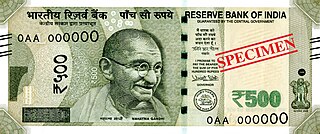
The Indian 500-rupee banknote is a denomination of the Indian rupee. In 1987, the ₹500 note was introduced, followed by the ₹1,000 note in the year. The current ₹500 banknote, in circulation since 10 November 2016, is a part of the Mahatma Gandhi New Series. The previous banknotes of the Mahatma Gandhi Series, in circulation between October 1997 and November 2016, were demonetised on November 8, 2016.

The Mahatma Gandhi Memorial is a public statue of Mahatma Gandhi, installed on a triangular island along Massachusetts Avenue, in front of the Embassy of India, Washington, D.C., in the United States. A gift from the Indian Council for Cultural Relations, it was dedicated on September 16, 2000 during a state visit of Indian Prime Minister Atal Bihari Vajpayee in the presence of US President Bill Clinton.
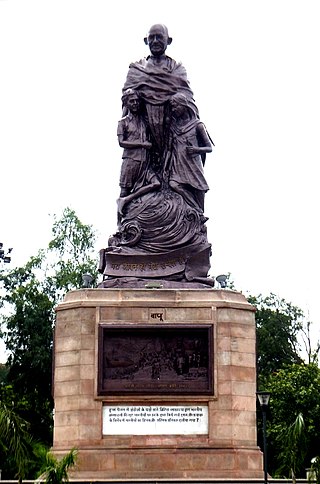
The statue of Mahatma Gandhi in Gandhi Maidan, Patna, is a public monument of India's father of Nation Mahatma Gandhi. The statue is the world's tallest bronze statue of Mahatma Gandhi. It was unveiled on 15 February 2013 by the then chief minister of Bihar, Nitish Kumar. It was established by Government of Bihar at a cost of ₹35 crore. The second tallest Gandhi statue turuvanur Chitradurga taluk and district karnataka
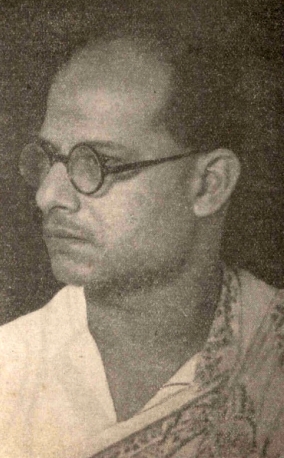
Devi Prasad Roy Choudhury was an Indian sculptor, painter and educator. He is well known for his monumental bronze sculptures, especially the Triumph of Labour and the Martyrs' Memorial, and is rated by many as one among the major artists of Indian modern art. He worked in a broad spectrum of mediums including watercolors, expressionist landscapes and commissioned portraits. Large scale sculptures were his particular strength and he made social realism the cornerstone of his art. In addition to painting and sculpting, he also wrestled, played the flute, engaged in hunting and wrote short stories in his spare time.

Mithuben Hormusji Petit was an Indian independence activist who participated in Mahatma Gandhi's Dandi March. A pioneer female independence activist, she was the Secretary of the Rashtriya Stree Sabha, a women's movement founded on Gandhian ideals. She became a recipient of India’s fourth highest-civilian honour, Padma Shri in 1961, for her social work.
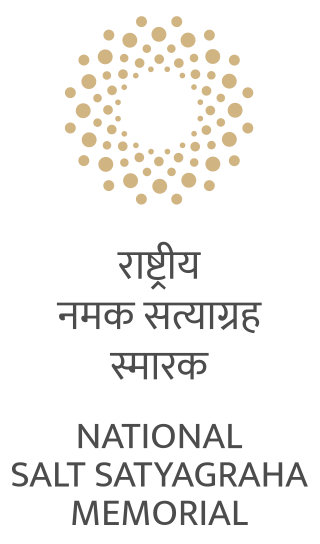
The National Salt Satyagraha Memorial or Dandi Memorial is a memorial in Dandi, Gujarat, India, that honors the activists and participants of the Salt Satyagraha, an act of nonviolent civil disobedience in colonial India which was led by Mahatma Gandhi in 1930. The memorial is spread over a 15 acres (61,000 m2) and is located in the coastal town of Dandi, where the Salt March ended on 5 April 1930 and the British salt monopoly was broken by producing salt by boiling sea water. The project was developed at an estimated cost of ₹89 crore (US$10 million).

Sadashiv Sathe or Bhau Sathe was an Indian sculptor. His notable works include the 5-metre high statue of Mahatma Gandhi that is part of the main structure of the National Salt Satyagraha Memorial situated at Dandi, Navsari and the 18-foot equestrian statue of Shivaji at the Gateway of India, Mumbai.

Adwaita Charan Gadanayak is an Indian sculptor. He was head of the School of Sculpture at the Kalinga Institute of Industrial Technology, Bhubaneswar. He is the director general of the National Gallery of Modern Art which is under the Ministry of Culture. He was honored with the Padma Shri, India's fourth-highest civilian award, by the Government of India.
The Statue of Mahatma Gandhi is a 16-foot (4.9 m) tall bronze statue of Mohandas Karamchand Gandhi located in the precincts of the Parliament House of India in New Delhi. Designed by Ram V. Sutar, it was inaugurated in 1993, and has become iconic as a site for protest by members of the Indian Parliament.
Bihar Vidyapeeth is an Indian Educational Institution founded by Mohandas Karamchand Gandhi on 6 February 1921 but it was seized by the British in 1942. It was started in Patna by Shri Rajendra Prasad and the land was donated by Maulana Mazharul Haque. Its first Institution was opened at Patna-Gaya road presently known as Buddha Marg. It was inaugurated by Mohammad Ali Jauhar and Kasturba Gandhi along with Mahatma Gandhi. In 2022, it is proposed to make Bihar Vidyapeeth a Central University.


















